Our Blog - Southern Italy - Bari
We left Trani and again headed South, along the coast. We stopped by this one place that I had found for lunch, which was a typical seafood restaurant. It was perched out on the water, and it seemed to be quite popular for lunch. Just outside of where we were sitting was a big white rectangular bin with what I think are squid, which seemed to be being washed. Talk about fresh!!


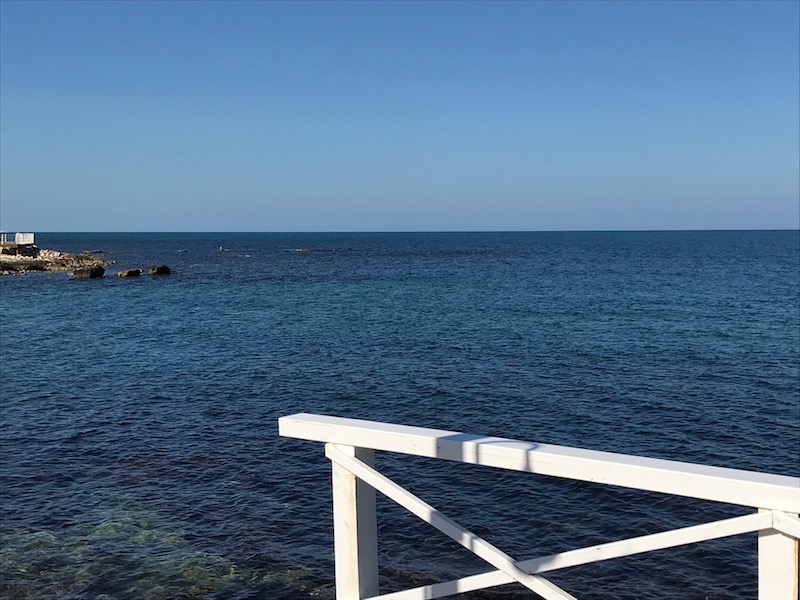

We then took a little detour and stopped in the town of Giovinazzo. We parked at Piazza Vittorio Emanuele II and admired the monumental fountain of the tritons, built by Tommaso Piscitelli in 1933.



We walked by the Church of Our Lady of Constantinople, although it wasn't open so we just looked at the exterior. It was built in 1528 on the ruins of an ancient pagan temple dedicated to the goddess Minerva. Above the door is a sculpture of the Virgin with Child with a statue of Christ the Redeemer just above that. In a niche to the right of the door is a large statue of either Saint Christopher or Saint Francis (I found differing opinions on who the statue in the niche was of) done by a local artist, Antonio Altieri in the 18th century.



Then we stopped at the Cathedral of Santa Maria Assunta, which was the main point of the detour (and yes, again we found it closed). It was built in 12th century in the Apulian Romanesque style, with Norman and oriental elements.




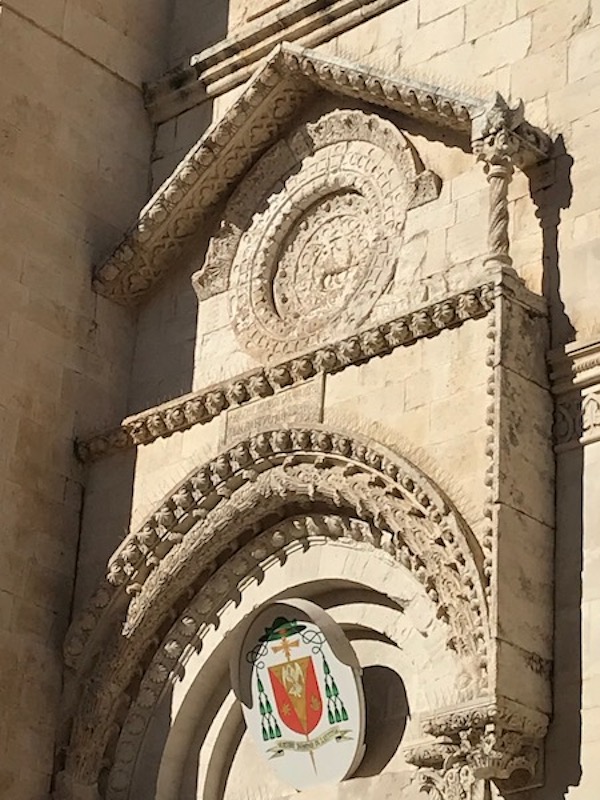
Then on to Bari. We stayed at a B&B called "Room 56", which was one of the best B&Bs we've stayed at. It used to be 2 apartments on the 7th floor of a building a couple blocks from the historical center and just off one of the main pedestrian shopping streets. The room was perfect! Everything looked brand new or newly renovated, and it had a little balcony with nice views.






Bari is the 2nd most important economic center in Southern Italy (after Naples), with a metropolitan population of about 1.3 million. It has an important port as well as being a University town. A bit of trivia, in the 1995 film "The Bridges of Madison County", the Italian housewife Francesca Johnson, played by Meryl Streep, was from Bari although she grew up in Naples. We walked a couple blocks to the old city walls, and entered the historical district through the 9th century Arch of Giandomenico Petroni (the names come from a mayor of Bari in the 19th century).

Castello Svevo is yet another castle that has a link to Holy Roman emperor Fredrick II. It was built in the 1130's by the Norman king, Roger II, but was destroyed in 1156 by King William I of Sicily. Fredrick II rebuilt and reinforced it in 1233 although it also had quite a few modifications once it was passed down to Bona Sforza (the Queen of Poland and Grand Duchess of Lithuania from 1518 to 1557 and Duchess of Bari between 1524 and 1557). You may remember the name Sforza from our Milan blog, since the Sforza family ruled the duchy of Milan from 1450 to 1535. It has a very familiar shape with the thick defensive wall, bastions, and a large moat.


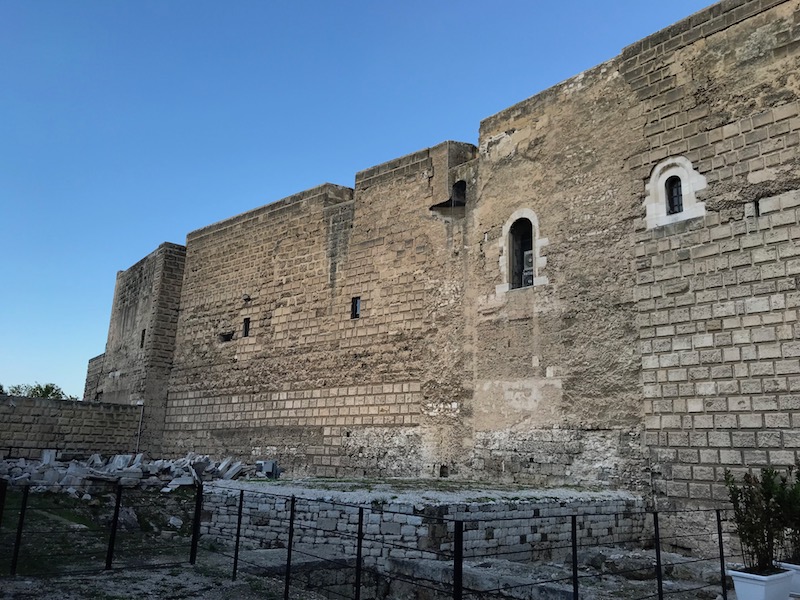
Some of the items that Emperor Frederick II added are quite nice. First is the pointed-arch access portal to the courtyard, which has carvings of griffons, eagles, vegetation, and human figures. Then further in, the pilaster capitals within the vestibule has human heads of warriors with headgear dating back to Roman times.




Within the courtyard, a grand staircase takes you up to the main interior palace. Unfortunately, not much of the palace itself was open to the public. There are some older archeological finds in the basement, which date back to the original castle from the 12th century.


One of the more interesting parts for us was the gallery of plaster casts, which is a collection of molds made from various medieval sculptures within the Puglia area. This first one is a capitol from a church from the 14th century.

And then a semi-circular mold of a sculpture above the door of a 12th church showing Christ flanked on either side by angels.

And then from Giovanazzo and the Cathedral of Santa Maria Assunta, a griffin holding a fish in its claws, and then also one holding a snake.


This one is interesting ... it shows the Madonna and child at the top, and apostles below. However, the "child" is shown as an adult male.



Another church that was very plain on the outside (so I didn't bother with a picture) is the Church of San Giacomo. It dates back to 1180 although the late-baroque style interior is from the 18th century. The side chapels are not very deep and only have enough room for the side altars and a painting.


The Cathedral of Bari was built in the late 12th century and was built on the site of the ruins of the Imperial Byzantine cathedral destroyed in 1156 by William I of Sicily. The simple façade has three portals below a rose window, over which is a lintel carved with monsters and fantastic beasts.


The interior has 3 aisles separated by columns and although it was modified with Baroque additions, these have been removed to take it back to the original Apulian Romanesque style.





The baptismal font dates from the 9th century.

We then headed to the crypt where the relics of Saint Sabinus, bishop of Canosa, are kept. The low ceilings and plentiful decoration are a stark contrast to the cathedral above it.


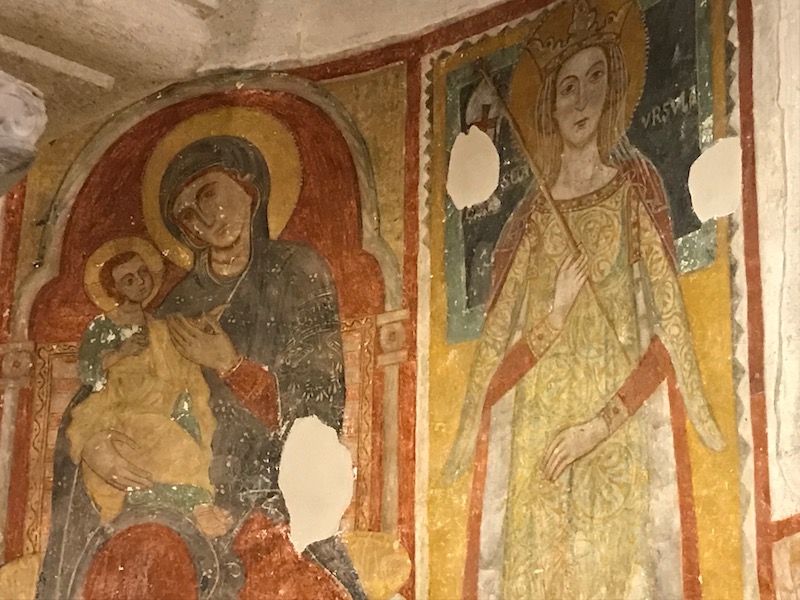
We happened to pass by cathedral at night and grabbed a picture with the moon shining above it.

The Archbishop's seminary was built in 1610 and sits alongside the Cathedral. It was remodeled in the 18th century and is one of the key places in the rebirth of Baroque architecture in the city.



In one corner of Piazza Mercantile, we found this column with a large stone lion is crouched. This is the Column of Justice, and supposedly people would be tied to it if they had debts that they couldn't pay. The lion was probably removed from a Roman tomb dating back between 1st B.C. and 1st A.D. It symbolizes power and justice.

We quickly popped outside of the city walls through one of the gates before heading back inside.


Probably the most famous tourist sight in town is the Basilica of Saint Nicolas, which was built in the late 11th century to house the relics of St. Nicholas that arrived in Bari in 1087.

The exterior is quite plain although there was some nice detail around the door. It had been modified several times but a restoration in the early 20th century restored it back to the original Romanesque style. The central portal is the largest three entry doors and is richly carved with strong symbolic elements. It depicts Christ’s victory over paganism through the archivolt decorations, the sculpture depicting a sphinx on the cusp of the protruding porch, and the oxen supporting the octagonal columns standing on either side of the portal.
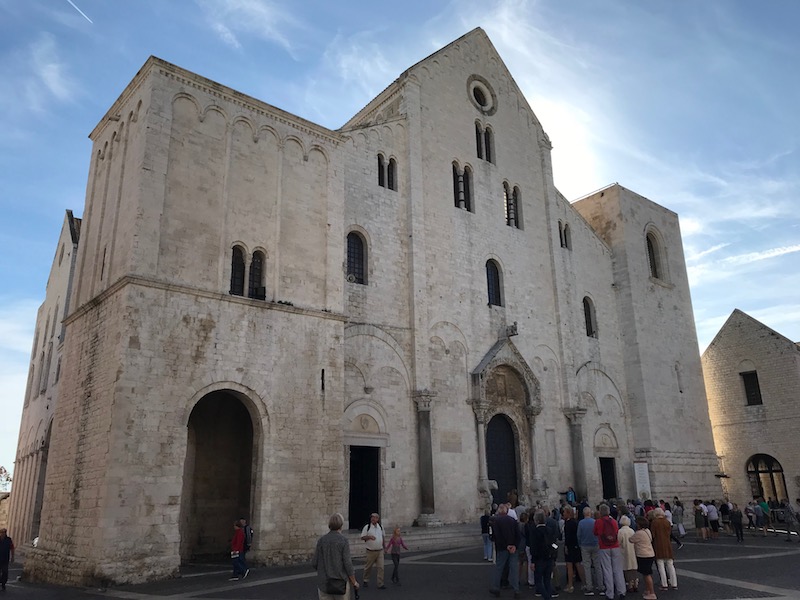




Once you go inside, the first thing that strikes you are these huge arches that go across the central nave. The arches across were added in the 15th century after an earthquake.

The second thing that catches your eye is the high ceiling that is carved wood and paintings, which were done by a local artist in the 1660's. The high altar is located at the end of the central nave, and is surmounted by the oldest ciborium in Apulia (12th century).


The high altar is located at the end of the central nave, and is surmounted by the oldest ciborium in Apulia (12th century).

And another crypt although this one is much less ornate than the one at the Cathedral. The relics of St. Nicholas were stolen from Myra (in Turkey) in 1087 by some sailors from Bari who brought them back here and entrusted them to the abbot of the monastery of St. Benedict and founder of the Basilica.


Some kind of a service in the crypt (make sure your sound is on, it is really the singing which is important).
In the square of Santa Maria del Buonconsiglio are what remains of an ancient church: Roman columns with Corinthian capitals and a floor mosaic with polychrome blocks. Part of the mosaic dates from the Middle Ages, while the floor from within the central nave of the church goes back to the 11th and 12th centuries.


Back out of the historical old town, was went by Teatro Piccini. I initially thought about Puccini (the opera composer) but in fact, it is named for composer Vito Niccolò Marcello Antonio Giacomo Piccinni, who was born in Bari in 1728. The theater itself was founded in 1854. There was some construction going on, so I could only get pictures of the exterior. Across the street is a small garden with a statue of Piccinni.



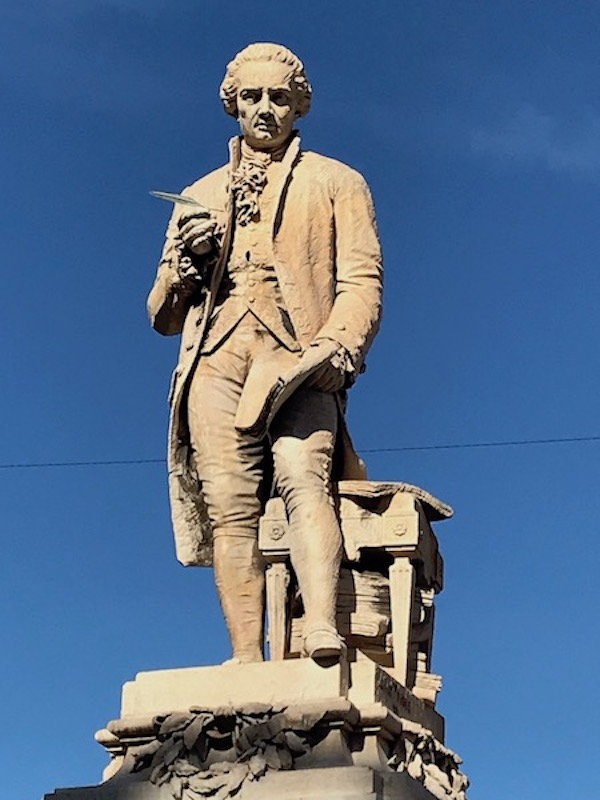
Another theater, this time Teatro Margherita, which was built from 1912 to 1914. It was used as a theater up until 1979 and is now a museum.

Before we headed out, we grabbed lunch at a little local place that was recommended by the B&B, and I actually thought it was better than the fish place the night before. We split an octopus salad with lemon and olive oil, and a steaming plate of black orecchiette pasta with tuna, tomatoes and capers.

